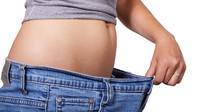
Physical fitness implies not only the acquisition of physical skills but it also the condition that helps a person look better, think better, digest better, enjoy more, feel better and more confident, too. It is a quality of life. A physically fit person carries out daily duties and responsibilities successfully and still have enough physical reserves to enjoy his social, civic, cultural and recreational interests. In this unit, you will find the different physical fitness tests to determine your fitness. Supplemental activities are also included to answer your weaknesses.
Physical Fitness Testing is a necessary activity because it will give us information on the status of the overall physical fitness. The test should be administered at least twice a year, the pre test at the beginning of the school year. The results of these tests will provide information whether the Physical Education Program in general, can help the students achieve desirable levels of physical fitness. The lists includes measurement of the overall physical fitness that include health-related and performance-related fitness.
Definition of Physical Fitness
Physical fitness must be viewed within the context of an individual's lifestyle and daily activities. The classic definition of physical fitness is the capacity to carry out one's daily tasks without undue fatigue and still have ample reserved energy to enjoy leisure time and meet unforeseen emergencies.
Physical fitness is the capacity of an individual to function in every way at one best. It is also a way of life characterized by the ability of an individual to perform daily tasks successfully. The ability to accomplish the requirements of daily living requires muscular strength, power, endurance, flexibility and cardio-respiratory fitness in order to be able to undertake more training aimed at achieving optimum fitness. Thus, the Physical Fitness Test Battery (PFTB) should be administered.
The PFTB is administered twice a year. The initial test is administered at the beginning of the school year, and the post test is given at the end of the school year. The results of the initial test are used as basis for providing continuous training to develop and maintain optimum performances.
Components of Physical Fitness
1. Cardio-Respiratory
2. Muscular strength
3. Flexibility
4. Speed
5. Power
6. Coordination
7. Balance
8. Agility
9. Reaction Time
The above mentioned physical fitness components have been discussed thoroughly when you were in first year.
Remember that the quality of whatever you do is related to your physical fitness level. The higher the physical fitness level, the better the performance in your daily work. Even physical appearance and self-confidence are improved.
Maximum utilization of fitness components may not be put into severe test all the time but in cases of emergency where full utilization of endurance, strength, etc., are required physical fitness may make the difference in survival.
It is therefore advantageous to develop and improve the different components of fitness to enjoy a happy and healthy life.
Physical Fitness Test Battery
The following physical test items are used in many countries. It is advantageous to use these tests because we can easily compare the Physical Fitness profile of Filipino students to that of their foreign counterparts.
The Physical Fitness Test Battery will determine our weaknesses and strengths which will serve as basis in redesigning the physical activities that may suit the individual fitness need of every student like you.
| Test Items | Physical Fitness Component Being Tested |
|---|---|
| 1. Standing Long Jump | leg strength and power |
| 2. Curl-ups | abdominal strength and endurance |
| 3. 50 M sprint | speed |
| 4. a) Pull-ups (boys) b) Flexed-Arm Hang (girls) | arm strength and endurance arm strength and endurance |
| 5. Shuttle Run | agility |
| 6. Sit and Reach | trunk agility |
| 7. 1000 M Run | cardio-respiratory endurance |
The Conditioning Program
The conditioning program activities for the development of physical fitness are divided into two: exercise and play.
Exercise - selected for the purpose of preparing the body for more complicated movements and skills. Some exercise can be done with the use of light apparatus such as wand, barbell, ring and others, while some may be done without apparatus like calisthenics, stunt and tumbling.
Example of Exercises:
1. For muscular strength
2. For leg power
3. For agility
4. For flexibility
5. For endurance
6. For cardio-vascular strength and endurance
7. For abdominal strength
Good Posture
Good posture is essential in the development of physical fitness. It is the proper alignment of body parts whether in standing, walking, sitting or running.
1. A Good Standing Posture
a) Chin up
b) Feet straight
c) Chest out
d) Stomach in
e) Arms on the sides
2. The Mechanics of Walking
a) Assume a good standing posture, toes pointed forward, walk in two parallel lines, one for the right and one for the left foot.
b) The weight of the body falls on the heel of the foot and then it rolls to the balls of the foot.
c) Swing arms moderately forward and backward.
d) Knees slightly flexed.
3. The Mechanics of Sitting
a) With your back towards the chair, place one foot under the chair.
b) Bend trunk slightly forward and reach for back of the chair.

















